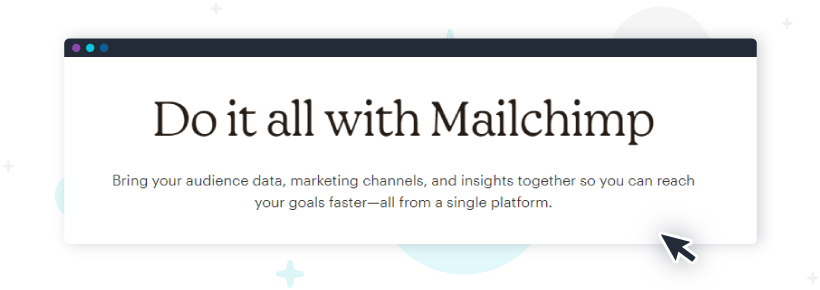10 Easy Rules for Content Marketing Writing

Marketing writers have a variety of responsibilities, but the right one will depend on the specific requirements of a client. A marketing writer must be flexible in considering the client, the product or service being marketed, and the audience that’s being targeted.
What Is Marketing Writing?
Marketing writing is more than merely cranking out blog posts and website copy. A strong marketing writer is part journalist, part subject matter expert, and part researcher — and they even have a sense of humor when the occasion calls for it.
Let’s take a look at some of the strategies good marketing writers employ to create writing that persuades audiences to act.
How Is Marketing Writing Different From Other Types of Writing?
Marketing writing is designed to create content with a purpose. It provides information customers seek, including actionable resources for a business’s customers and clients. A business’s marketing writing can take many forms, from blog posts and website copy that’s often updated to more detailed articles published in reputable outlets. It can also take the form of a video script capturing the audience’s attention and explains or demonstrates the company’s product.
The copywriter’s traditional role has expanded and is sometimes fulfilled by the whole marketing team. Every member of that team, from the business analyst to the social media manager, is expected to convert ideas into marketing copy.
Ten Rules for Marketing Writing.
1. KISS — keep it simple and succinct
In marketing writing, the KISS principle means using a simple, straightforward three-part structure consisting of the introduction, body copy, and conclusion.
- In the introduction, the writer needs to explain the value being offered to the reader. Failing to do that means a loss of reader engagement and attention. If that happens, it won’t matter what’s in the next three sections.
- The body of your content is where you elaborate on the argument introduced at the beginning. This is where you give evidence to support your point.
- The conclusion reiterates the introduction and also explains how the piece of content has provided a benefit to the reader as a customer.
2. Write to your audience
Writing a good piece of content means understanding who your customer is. Companies should not delude themselves into thinking everyone wants their products because that simply isn’t realistic. Trying to appeal to everyone ends up making the product unappealing.
One effective way to launch an audience identification strategy is to create customer personas. Customer or buyer personas are semi-fictional archetypes based on actual customer research and data that represent the key traits of your target audience.
After conducting interviews, focus groups, and other data collection efforts, marketers consolidate the responses to identify commonalities in the available data. From there, they work to identify pain points and other psychographics the company’s customers are experiencing. Using this collected and analyzed data, you can develop a profile of a person that combines demographic information and common themes from your data. This is where the vision of a typical customer takes shape.
3. Make it a story when applicable
Storytelling can be a powerful tool to capture and hold your audience’s attention. Stories are powerful because they touch the emotional core of who we are as human beings. Before there was the written or printed word, there were oral traditions. A successful story answers three core questions:
- What’s the outcome? This describes the way you want your audience to feel and react after hearing your story.
- What’s the plot? This is the beginning, middle, and end of the story.
- What’s the narrative? This determines how you tie the plot elements together into a cohesive sequence of events.
Once you’ve established the answers to these questions, seek feedback on your story from others. Then you can decide how the story is going to be incorporated into your campaign or brand.
Storytelling has been an exceptionally powerful marketing tool with the advent of socially conscious businesses. Storytelling can convey a company’s commitment to giving back as well as their belief in their product. A relevant example of this is Warby Parker, the company that took on the mammoth eyeglass industry with low-cost, high-quality alternative eyewear. Warby Parker’s story is the very definition of the KISS principle in action: As a cash-strapped college student, one of the founders of Warby Parker loses his glasses on a camping trip and is motivated to start the company after having to wait to replace his glasses thanks to the high cost of quality eyeglasses.
4. Include statistics and cite the reference
Making an assertion is easy. Backing up that assertion with evidence may not be quite as simple. Good content marketing often includes statistics derived from market research.
If you’re trying to drive a point home to your audience, back it up with a statistic. It’s an effective way to convince a reader about the accuracy of your assertion. Phrases like “Lots of people… ” are vague and may seem intuitively true but unproven, such as “Lots of people love our cars!” However, it’s harder to argue with a phrase like “Mazda is the number one rated car for reliability according to Consumer Reports,” along with a link to Consumer Reports backing up this statement.
5. Craft short paragraphs
There is one very simple reason to use short paragraphs in marketing writing, especially for digital marketing content: Your audience is likely reading the content on a smartphone or tablet. Short paragraphs are much more likely to keep the reader’s attention and appear less intimidating.
6. Add humor when it makes sense (and fits your brand)
As a marketing strategy, humor can be effective when used properly. It can also be catastrophic when misused. Infusing a marketing campaign with humor can be a tricky proposition. Success doesn’t rely solely on the humor itself, but also on your knowledge of your audience, situational awareness, and emotional intelligence.
Effective humor in marketing is usually self-effacing, as was the case with KFC’s campaign in the UK. In 2018, KFC was living every fried chicken restaurant’s worst nightmare: a chicken shortage. It handled this crisis with a brilliantly written, audience-appropriate, and tongue-in-cheek exercise in laughing at itself while addressing the problem. In turn, this allowed the audience to laugh along with the company.

“We’re sorry.
“A chicken restaurant without any chicken. It’s not ideal. Huge apologies to our customers, especially those who traveled out of their way to find we were closed. And endless thanks to our KFC team members and our franchise partners for working tirelessly to improve the situation. It’s been a hell of a week, but we’re making progress, and every day more and more fresh chicken is being delivered to our restaurants. Thank you for bearing with us.”
7. Use a CTA
Remember earlier when we described simple, concise marketing writing as having an introduction, a body, and a conclusion? This structure culminates with a clear set of instructions designed to drive the potential customer to a call to action.
If a customer invests the time to read your writing and you have invested the time to give them writing worth reading, then the call to action serves as the mutual payoff. A strong, clear call to action gives the reader the next step to take in order to interact with your business in a way that will solve their problem.
8. Incorporate SEO in a natural way
In order for potential customers to read your content, you either have to make it easy to find, or you have to put it right in front of them. Making it easy to find involves search engines, while the latter typically involves social media promotions aimed at that target audience.
The beauty of the relationship between the two is that one feeds the other. Social media can drive hits to your web content, which can help in boosting organic search engine rankings. When a person finds your site using a Facebook link, for instance, you can use that web content to drive them to your Twitter, Instagram, and Pinterest feeds.
Another key to using these strategies to climb the search engine rankings is regularly refreshed pieces of content that link to each other. Creating internal links that connect your best and most popular pieces of content, whether that’s through your website, a blog, or a social media feed helps increase the shareability of your content as well as the likelihood that other sites will link to it.
9. Don’t sell
Marketing writers who don’t work in marketing sometimes confuse marketing with selling. These two functions are both critical to corporate success but they are not the same thing. A good way to think about the difference between marketing and selling is by thinking about the difference between a product and a brand.
A product (or service) is a thing, tangible or not, that can have a value attached to it. Once the product or service is in the hands of the customer and they’ve paid for it, the transaction is basically closed.
On the other hand, a brand is an idea. The goal of marketing is to spread that idea to as many people as possible. When the brand is received by the target audience by way of a specific channel or channels, the relationship between the company and that audience has just begun, and marketing’s job is to maintain that relationship for as long as possible.
10. Create a distinct voice that represents the brand
When you hear marketers refer to a brand’s “voice,” it might sound a bit abstract. Voice is a hard thing to quantify or measure, unlike other metrics in marketing like SEO or hits on a website or the number of subscribers to a blog.
Voice refers to the emotion and personality baked into a company’s communications and the desired audience reaction to those communications. The one part of a brand’s voice that can be measured is how consistently that voice is delivered across the brand’s various communications channels.
For example, Mailchimp’s brand voice conveys simplicity, ease of use, and an all-in-one solution for its customers.

Image courtesy of Mailchimp.com
This example from the Mailchimp homepage conveys big ideas and definitive solutions using an authoritative voice and few words.
Thanks for reading! Do you want to create thought leadership articles like the one above? If you struggle to translate your ideas into content that will help build credibility and influence others, sign up to get John’s latest online course “Writing From Your Voice” here.



